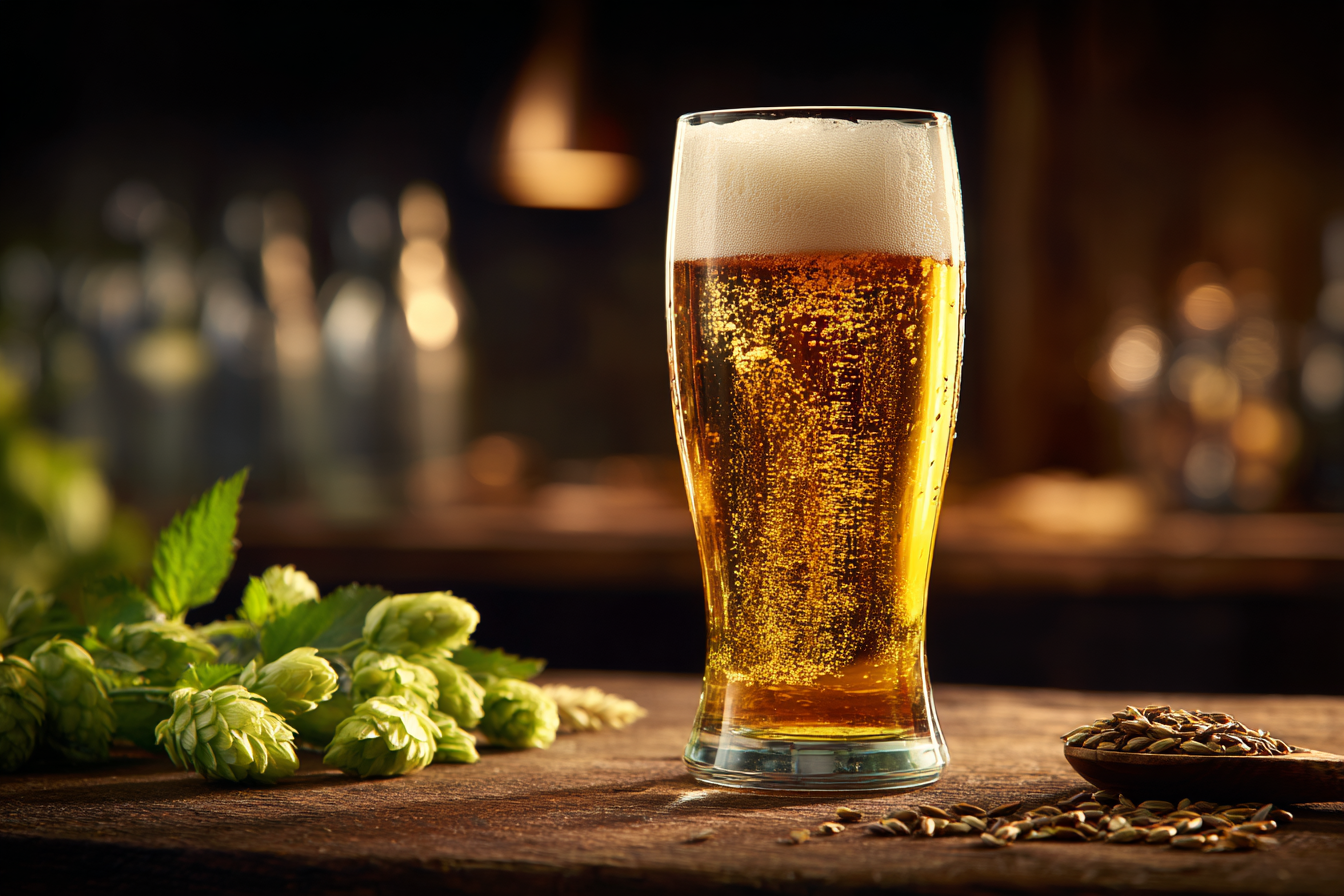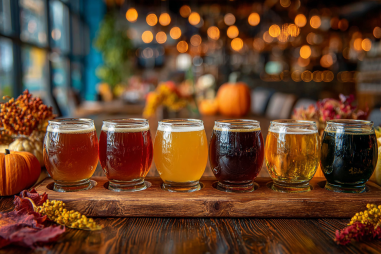The American style pilsner has steadily gained popularity among craft beer enthusiasts for its crisp, refreshing, and hop-forward character. While it draws inspiration from the traditional European pilsners, this distinctly American take offers a unique blend of malt sweetness, vibrant hop aromas, and a clean finish that appeals to a wide range of palates. Whether you’re a seasoned beer lover or just starting to explore different beer styles, understanding the flavor profile of an American style pilsner can enhance your appreciation for this dynamic brew. Let’s dive into what makes this beer style stand out.
Introduction to American Style Pilsner
The American style pilsner is a variation of the classic pilsner originally brewed in the Czech Republic and Germany. Over the years, American brewers have embraced this style and adapted it to suit local tastes and ingredients. Unlike its European counterparts, which tend to emphasize a more pronounced malt backbone or showcase noble hops, the American style pilsner usually boasts a brighter hop character and a cleaner malt profile. It is most often brewed with American hop varieties that add citrusy, resinous, and piney notes, delivering a vibrant sensory experience with each sip. This style balances drinkability with complexity, making it a go-to choice for those who love crisp lagers with an exciting twist.
Malt Sweetness and Its Role in the Flavor
Malt forms the foundation of any beer’s flavor profile, and American style pilsners are no exception. Typically, brewers opt for light base malts such as Pilsner malt, which imparts a gentle sweetness that’s subtle but essential. This malt presence provides a soft, cracker-like or bready flavor that forms the backbone of the beer. Unlike some European pilsners that may have a more pronounced biscuity or toasty malt character, the American style tends to keep maltiness light and airy to allow the hops to shine.
This malt sweetness lends balance by counteracting the bitterness from the hops. Without this underlying sweetness, the beer could taste overly sharp or harsh. Instead, the interplay between malt and hops results in a clean, invigorating mouthfeel that invites sip after sip. Also, depending on the brewer’s choices, there may be faint hints of honey, floral, or even subtle caramel nuances; but overall, the malt contribution remains crisp and understated.
Hop Bitterness and Aroma Characteristics
A defining attribute of the American style pilsner is its hop-forward nature. Unlike traditional pilsners that utilize noble European hops (such as Saaz, Hallertau, or Tettnang) which produce herbal, earthy, and spicy aromas, American pilsners feature hops like Cascade, Centennial, Amarillo, or Citra. These add refreshing citrus, grapefruit, pine, and floral notes that make the beer notably brighter and more aromatic.
Bitterness levels are moderate but assertive, typically ranging between 30 to 40 IBUs (International Bitterness Units), providing a crisp bitterness that balances the malt’s sweetness without overwhelming the palate. The aroma is often marked by vibrant floral and citrus bursts, inviting drinkers in with enticing scents before they take their first sip. Furthermore, dry hopping is sometimes employed to accentuate aroma without adding additional bitterness, reinforcing the vibrant hop character that defines this style.
Yeast Contributions to Taste and Aroma
Yeast plays a subtle yet crucial role in the flavor profile of an American style pilsner. Most brewers use clean-fermenting lager yeast strains that minimize fruity esters or phenolic compounds. The aim is to keep the taste profile pure and focused on malt and hops rather than yeast-driven flavors, which differentiates it from ales or more traditional pilsners with pronounced yeast character.
However, depending on fermentation temperature and yeast strain, you might occasionally detect delicate hints of graininess or a mild bready quality that adds complexity to the beer. The attenuation (yeast’s ability to consume sugars) is usually high, leading to a dry finish that encourages refreshment and drinkability. Overall, the yeast contribution enhances clarity and crispness, ensuring the pilsner stays light and lively.
Mouthfeel and Carbonation Levels
Another factor that distinctly defines the American style pilsner is its mouthfeel. This beer typically presents a light to medium body that feels smooth and clean on the palate. It is not heavy or syrupy, which appeals to those seeking an easy-drinking beer that won’t weigh them down.
Carbonation plays an integral role here, often set at the higher end of the spectrum for lagers to produce a lively, effervescent sensation. The bubbly carbonation not only helps cleanse the palate but also accentuates the crispness and hop bitterness, making each sip refreshing and vibrant. This spritzy mouthfeel is part of what makes the American pilsner a perfect quencher on warm days or after physical activity.
Differences from Traditional European Pilsners
While American style pilsners owe much to European traditions, the differences are notable and intentional. Some of the main contrasts include:
- Hop Selection: American pilsners rely on American-grown hop varieties that impart bold citrus, pine, and floral aromas, whereas European pilsners lean towards softer, herbal, and spicy noble hop profiles.
- Malt Profile: Traditional European pilsners often feature a malt richness with slight biscuity or toasted notes, sometimes with a slightly fuller body. American pilsners generally favor lighter malt character with a cracker-like sweetness to let the hops dominate.
- Bitterness and Balance: American styles tend to emphasize a more pronounced hop bitterness, making the beer feel slightly more assertive but still balanced and approachable.
- Yeast Characteristics: European pilsners may have subtle yeast esters or phenolic flavors based on region and brewing method, whereas American pilsners focus on purity and cleanliness through lager yeast fermentation.
These differences combine to create a distinct beer experience that celebrates American creativity and hop innovation while respecting pilsner origins.
Food Pairings That Complement the Flavor
Thanks to its crispness, balanced bitterness, and bright hop profile, the American style pilsner pairs beautifully with a wide variety of foods. Here are some pairing ideas to try:
- Grilled seafood: The beer’s light body and hops complement flavors from shrimp, scallops, or grilled fish without overpowering them.
- Aromatic salads: Crisp greens and citrus-based dressings harmonize with the beer’s zesty hop character.
- Spicy foods: The refreshing carbonation and malt backbone help cool the palate when enjoying dishes like spicy tacos, buffalo wings, or Asian-inspired fare.
- Cheeses: Mild to medium cheeses such as mozzarella, gouda, or cheddar highlight the malt’s subtle sweetness and balance hops.
- Burgers and sandwiches: The clean finish and hop bitterness cut through rich, savory flavors, making the beer a versatile companion to casual meals.
Overall, the American pilsner’s versatility makes it an excellent choice for a wide array of dining occasions.
Tasting Tips to Identify Flavor Nuances
To fully appreciate the complexities of an American style pilsner, use these tasting tips to identify its key characteristics:
- Look: Observe the pale golden color and clarity. Notice the carbonation bubbles rising through the glass.
- Smell: Take a few gentle sniffs to appreciate the hop aroma—citrus, floral, pine, or even slight tropical notes may emerge.
- First Sip: Notice the initial malt sweetness that sets the stage—a cracker-like, soft backbone that cushions the palate.
- Mid-palate: Focus on how hop bitterness develops—moderate but crisp and refreshing without harshness.
- Finish: Detect the dryness and effervescence from yeast and carbonation, which invite you to take another sip.
- Reflect: Try to pick up on any subtle nuances such as floral or honey-like malt notes, lingering citrus from the hops, or the clean lager yeast character.
Using this method can help you engage with the beer on a deeper sensory level and heighten your enjoyment.
Celebrating the Flavor Complexity of American Style Pilsners
The American style pilsner is an excellent example of how tradition and creativity can combine to produce a beer that’s both familiar and exciting. Its inviting malt sweetness, distinctive hop bitterness, and clean lager yeast profile come together in a bright, lively beer that suits a wide variety of tastes and occasions. Whether you prefer it on its own or paired with complementary dishes, appreciating the nuanced flavor profile of this style will deepen your beer appreciation.
For those exploring American craft beer, the American style pilsner offers a gateway to discovering how regional ingredients and brewing innovation can shape classic styles in new and refreshing ways. So next time you enjoy one, take a moment to savor its balanced complexity—there’s plenty to enjoy in every crisp, refreshing sip.







